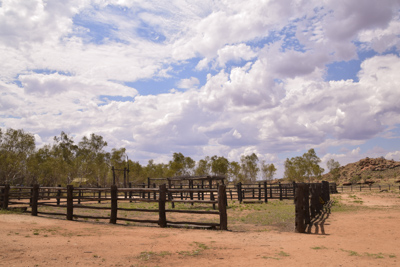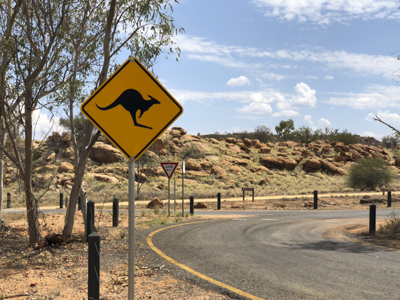Tuesday- November 6, 2018
One of the most popular activities at Sails in the Desert Resort is to wake up at dawn and watch the sun rise on Uluru aka Ayres Rock. As the sunlight falls on the red sandstone of the monolith, Uluru changes colors. Our group rallied out into the cool dark desert at 5:00AM to watch the sun awaken the vibrant colors of “the Rock.”
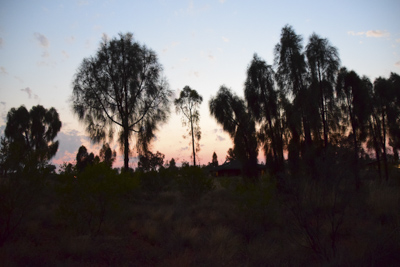
The bus drove us out to “the Sunrise Viewing Area” in the dark. Along with other large groups of tourists, we watched and waited and waited. Cricket chirps were joined by early bird calls.
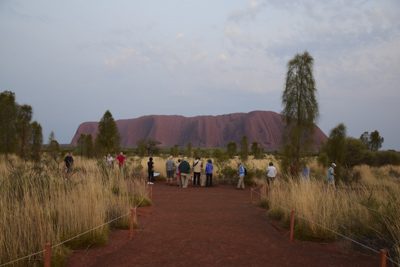
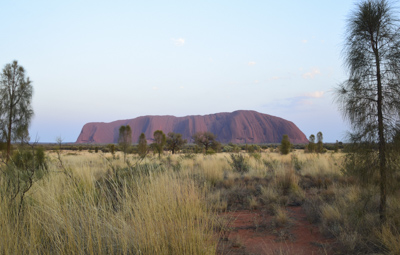
We waited and watched the sky become lighter. In my opinion, Uluru was more spectacular last night. The light on the red sand monolith had been an amazing sight. This morning, high clouds rolled in and put a haze around Uluru. We all took pictures but by 6:30 we left the viewing area to have a buffet breakfast at the Sails in the Desert Hotel.
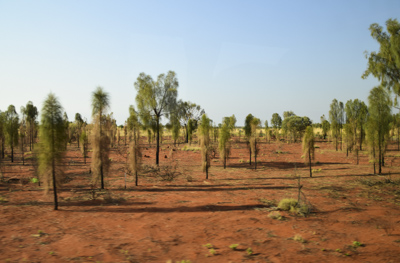
Immediately afterwards, we were driven to the Ayres Rock Resort Airport to fly to Darwin, with a six-hour stop-over in Alice Springs. Fortunately for us, the tour company made arrangements so we could visit “Alice” and see some sights and not spend the day at the tiny Airport. The map below highlights the location of Alice Springs.
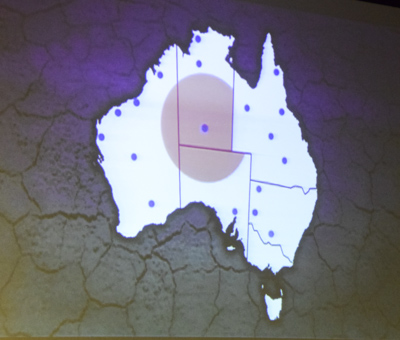
Alice Springs is a remote town located north of Uluru, in the Northern Territory. The small town of 28,000 people became famous in 1950 after a book called “A Town Like Alice” was published. It was written by Nevil Shute and the novel was made into a movie and later it became a television mini-series.
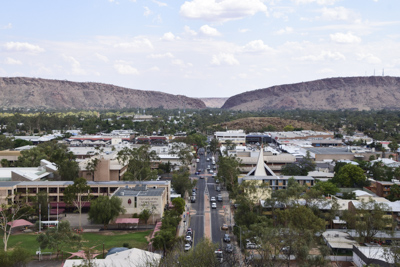
I was pleased and excited to visit “Alice” because I remember the mini-series on television and especially the handsome actor Brian Brown. The tour group’s first stop was The Alice Springs School of the Air which broadcasts educational lessons to 125 elementary children who live in very remote areas in the Northern Territory. Radios were originally used to send lessons to children. Today, educational information is transferred via the internet and video recordings.
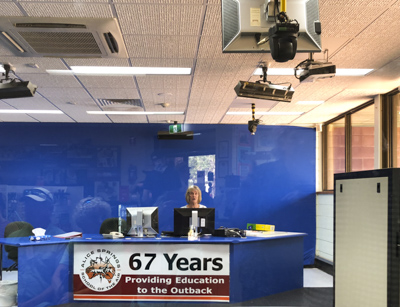
Our next stop was the Alice Springs Reptile Center where we learned that Australia has the most dangerous animals, venomous snakes, and poisonous spiders in the world. Many of these live in the desert surrounding Alice. A sweet young woman introduced us to several docile snakes and lizards. The dangerous ones were in tanks in another room.
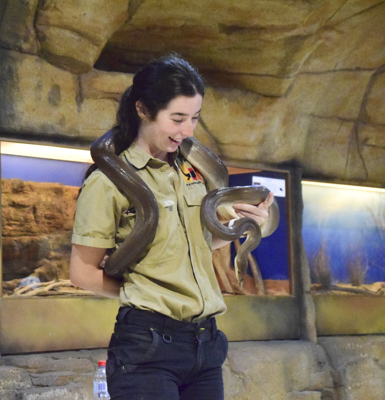
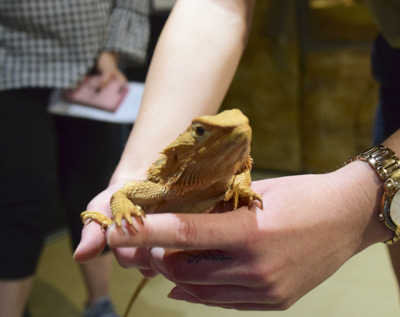
Later, we had a pleasant lunch in a restaurant that looked like the set of an American “Wild West” movie. I think it represented the wilderness of the Australian Outback which surrounds Alice Springs. There are thousands of miles of bushland:
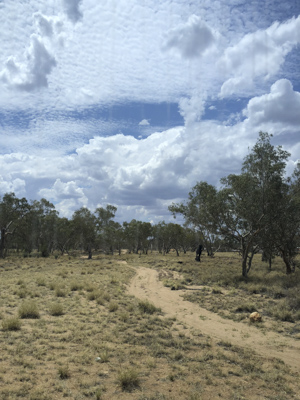
The day heated up to about 90 degrees in the sun with a high level of humidity, but our tour guide, Juliet, wanted us to see the Overland Telegraph Station. The first telegraph messages from overseas were relayed through this station which connected Darwin to Adelaide in 1872. It linked Australia to an undersea cable that came ashore in Port Darwin to Indonesia. This made communication between Australia and the rest of the world possible.
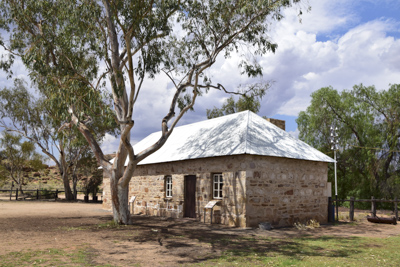
Our final stop was to the top of ANZAC Hill to see the memorial dedicated to those who served in World War I. It was a great location with 360 degree views of Alice Springs. As an added bonus, someone spotted a snake under a bush. The bus driver identified it as a western brown snake, one of the ten most venomous snakes in Australia (and the world?) which we had seen in a tank at the Reptile Center.
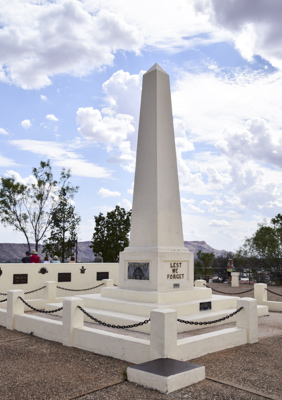
Fortunately, this was our last stop in Alice. We all boarded the bus and were driven to the airport for our flight north to Darwin. It had been an interesting day visiting “The Outback.”
